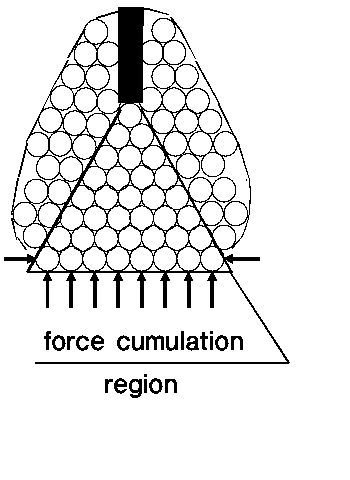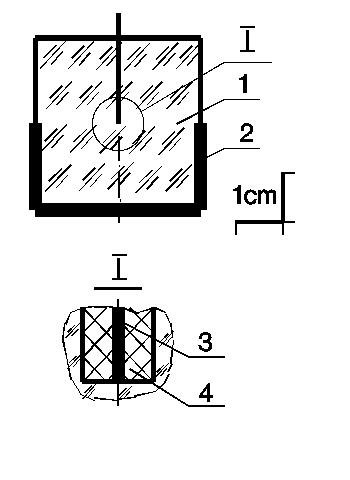- bound or free ion current within solid substances
- non-plain symmetry
- cumulation of the ion interaction
- cold nuclear fusion
Another keywords: polarization, depolarization, ionic conductor, superionic
conductor, ice, crystal, strain, V-center, V-centre, doped crystal, interstitial
impurity, intrinsic color center, high pressure technology, Bridgman anvil,
experiment, crowdion, dielectric, proton, layer, defect, lattice, dynamics,
electromigration, mobility, muon catalysis, concentration, doping, dopant,
conductivity, pycnonuclear reaction, permittivity, dielectric constant, point
defects, interstitials, polarizability, imperfection, defect centers, glass,
epitaxy, sodium hydroxide, metallic substrate, melt, crystallization, point, tip,
susceptibility, ferroelectric, ordering, force, correlation, collective, shift,
distortion, coalescence, crowdions, electrolysis, cone, slope, slopes.
An experimental
result: Ice SuperPolarization.
Long-time-current experimental result with conical cathode:
In gases or liquids, their molecules movement will wash out the
configuration. In solids, it could be another case. By temperature level option
the proton and another cations mobility can be adjusted so as to save the
configuration undisturbed.
The fact that the configuration is statically stable can be proved by the
hard spheres or rolls model. Place the spheres or rolls (for example, balls or
rollers of a bearing) level-by-level on a line or plane foundation that supports
the first level and press on the top sphere or roll.
How can the configuration appear dynamically ? Let's remember a stagnation
zone of a liquid flow upstream of a solid obstacle. It takes place within plane
stream. Now, the top rod is a point cathode and the ion current is more
spherically symmetrical making conditions of the "quiet zone" appearance more
favorable. (See also
Numerical simulation results.)
There is one experimental result of interest. Coated with polymeric
insulation (4) the 0.25-mm-diameter copper wire (3) was sealed to the ice
crystal (1). By vessel walls warming the ice crystallization was directed from
the center down and laterally so that the ice crystal was visually defectless . A part of sample surfaces was covered by a room temperature
aluminium foil (2). After cooling it leads to ice-aluminium adhesion and Ohmic
contact. The central wire and the foil became cathode and anode by a circuit of
a diode and 3.8 microF roll-off capacitor that generated about 300 V D.C.
tension. An analog ammeter measured the circuit current.
At -10oC there was a (10-20)*10-6A current for long
time. At -25oC the ammeter registered through a native sample a
current pulse of 4 microA amplitude value and about 0.5 sec. duration. Whether
there are ballistic conditions of the measurement, or the real pulse has the
duration mentioned, the passing charge is about 1 microC. Its estimations by
formulae for capacity of spherical or cylindrical capacitor, having pointed
sizes and usual dielectric constant of the ice (about 100 [1]), give values of
2-3 orders of magnitude less.
Control samples were:
The pulse is absent also under exchange of applied voltage polarity; if
turn-on the circuit just after its turn-off, and even if there was short circuit
of the electrodes for 0.5 sec. before the turn-on. The relaxation time is about
several seconds.
It is believed that the only explanation is an internal strain field,
appearing as consequence of proton shifts in the ice polarization course, and
cumulating up to center. Because the field exists, the depolarization cannot
take place simultaneously overall sample volume but expands layer-by-layer from
the sample surface to its center taking much more time than the polarization
did.
There are also long time current results of interest but they are not so
clear because of surface current possibility and strong conductivity variation
as function of temperature, impurity and so on.(See also
Long time current experimental result with conical cathode.
)
Another substances should be searched to enhance the effect. There are many
requests to them. The most important thing is electron conductivity of the same
order of magnitude as proton (ion) conductivity. Only one new layer of protons
on a 0.1-mm diameter point surface would lead to several millions V potential as
compared to an infinity. Many such layers should be discharged within the
dielectric.
Quartz, ferrites, corundum and so on could be tried at high temperature (1000
K and higher). They are naturally nonstoichiometric crystals or intrinsic
semiconductors. But now I try a Na-doped NaOH-crystal.
If you have got references to analog investigations, or you know industrial
technology under analog conditions please send me e-mail: to2084@mail.ru. I could send more detailed
TeX-article and solid current problematic references (in Russian mainly).
1. D.Eisenberg, V.Kauzman, The Structure and Properties of Water, London:
Oxford University Press. 1969.
The force multiplier required (400) has a nuclear origin. The muon catalysis
investigations [2] got analytic methods of nuclear fusion probability
calculations for two particles held on some distance. For example, in muon
molecules (HD, DD), where internuclear distance is about one-two-hundredth of
one in usual hydrogen molecule, the reaction time is about 10^-8 s. For 1-sec.
reaction time, one-twentieth of the Bohr radius is required, i.e. about of 400
times of usual molecule force (atomic force unity).
2. Ya.B.Zel'dovich, S.S.Gershtein, Uspekhi Fiz.Nauk, v.71, 581 (1960).
Air bubbles were 5-mm deeper of the wire point. The defect may be important
for the cumulation region appearance. Decreased axial proton concentration leads
to more particles mobility into the axial zone, and increases the force
cumulation region independence of its environment.
Part I.
Part II.
NEW
 Whether it
is clear that if the top rod is hard compared with the array of particles,
surrounding it, then the region pointed interacts only with the rod. So, little
forces between the particles at the food of the chart concentrate up to the top.
The forces are usual chemical forces of the order of interatomic interaction.
The question stands is it possible to achieve 400 times concentration of the interaction.
Whether it
is clear that if the top rod is hard compared with the array of particles,
surrounding it, then the region pointed interacts only with the rod. So, little
forces between the particles at the food of the chart concentrate up to the top.
The forces are usual chemical forces of the order of interatomic interaction.
The question stands is it possible to achieve 400 times concentration of the interaction.
EXPERIMENTAL PART

NUCLEAR APPENDIX
ONE DEFECT